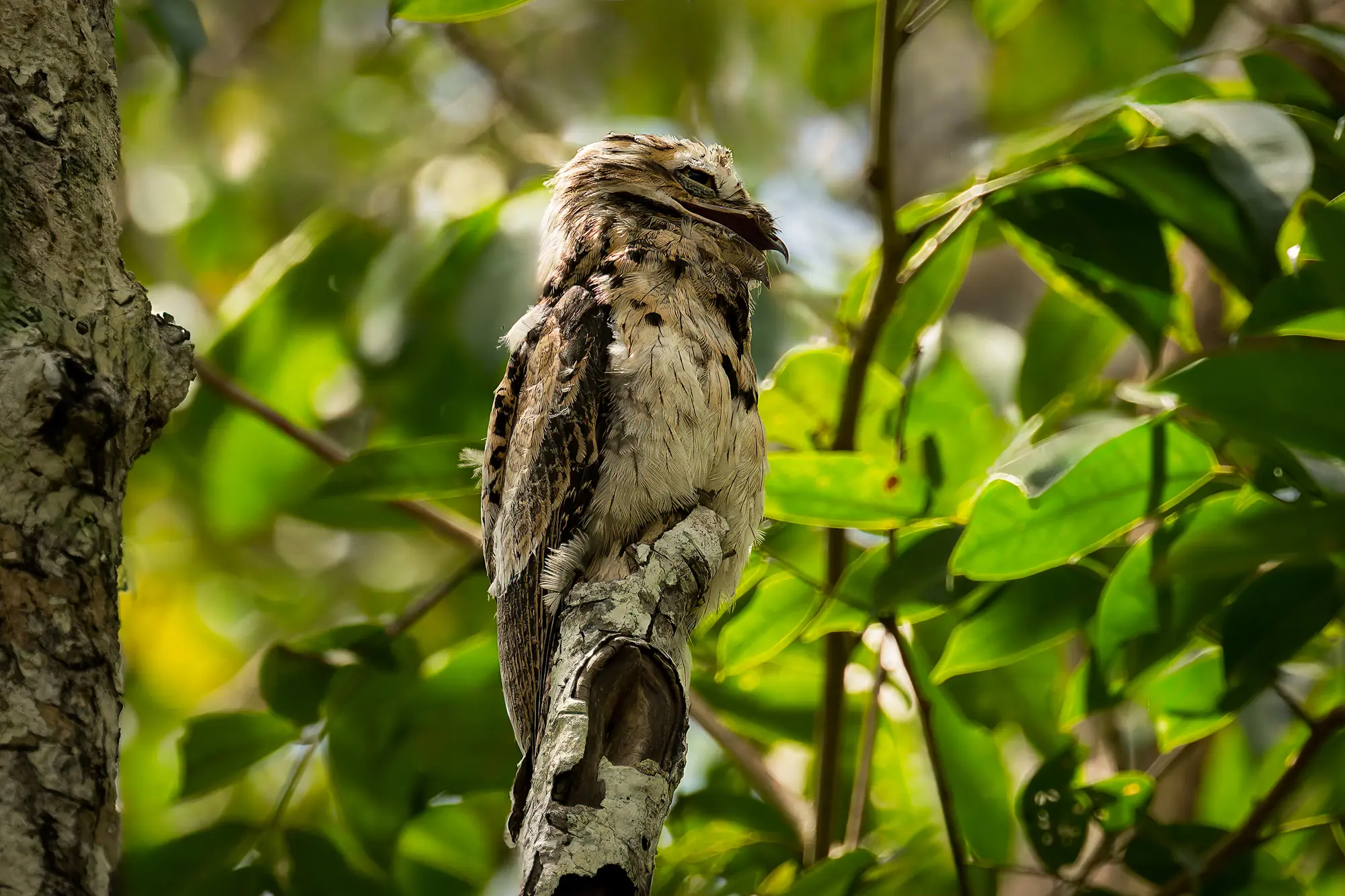The potoo bird, native to Central and South America, is one of nature’s most intriguing and mysterious creatures. Known for its incredible camouflage abilities and peculiar appearance, the potoo is a nocturnal bird that fascinates birdwatchers and scientists alike. Here are 22 captivating facts about this unique bird that reveal its fascinating traits and habits.
1. The potoo belongs to the family Nyctibiidae, which includes 7 species, all known for their excellent camouflage abilities.
2. This bird is often called the “ghost bird” due to its haunting call, which is often described as mournful and eerie.
3.Potoos are primarily nocturnal, meaning they hunt for insects and small prey at night, using their large, wide mouths to catch food mid-flight.
4. Their incredible camouflage allows them to mimic dead tree branches or stumps, helping them stay hidden from predators during the day.
5.Potoos have a unique eyelid structure with small slits that allow them to see even while their eyes are closed.
6. Despite their large, expressive eyes, potoos have poor eyesight during the day but can see exceptionally well at night.
7. These birds are native to Central and South America, found in countries like Brazil, Colombia, and Costa Rica.
8. Unlike many birds, the potoo does not build a nest. Instead, it lays a single egg directly on a branch or tree stump.
9.Potoo eggs are camouflaged to blend in with the tree, making them less visible to predators.
10. The potoo’s camouflage is so effective that it can be almost impossible to spot one during the day unless it moves.
11. The name “potoo” is believed to come from the sound of its call, which resembles the “po-too” noise the bird makes at night.
12.Potoos have an average lifespan of about 15 years in the wild, though their exact lifespan can vary depending on species and environmental factors.
13. They belong to the same order as nightjars and frogmouths, known for their similar nocturnal and insectivorous habits.
14.Potoos have short, weak legs that are adapted more for perching than for walking or running.
15. The great potoo is the largest species in the family and can reach lengths of up to 60 centimeters.
16. One of the potoo’s most distinct features is its wide mouth, which helps it catch flying insects with precision.
17.Potoos are generally solitary birds, preferring to roost and hunt alone rather than in groups.
18. The potoo’s call is often used as a sound effect in horror movies and television shows due to its eerie tone.
19.Potoos are not migratory and tend to stay within the same area throughout their lives.
20. Many people find potoos “cute” due to their large eyes and curious expressions, despite their ghostly appearance.
21. Although they may look like owls, potoos are not related to them. They are actually closer relatives of swifts and hummingbirds.
22. The IUCN lists most potoo species as Least Concern, but habitat loss and deforestation pose threats to some populations.
From their haunting calls to their almost invisible camouflage, the potoo bird remains one of the most fascinating nocturnal creatures in the animal kingdom. Whether admired for its mysterious nature or marveled at for its unique adaptation strategies, the potoo has secured its place as a captivating figure in the world of ornithology.
